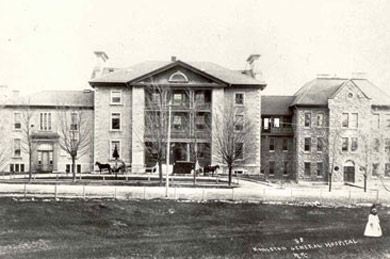


Logins for all VLC databases are found on the back of the VLC Bookmark.
Talk to your LCI today!


"The two Canadas were joined in 1840. The terms were decidedly unfair to Lower Canada: it was expected to help pay Upper Canada's £1.2 million debt (it had very little), and held it to fifty percent of the seats in the new Assembly despite having a much larger population".
Canada in the making, 2012, http://www.canadiana.ca/citm/themes/constitution/constitution11_e.html#top
1840 The Act of Union unites the provinces, but does not grant responsible government

"The British government only accepted part of the Durham Report. While Britain decided to unite Upper and Lower Canada, it did not grant responsible government. In the Act of Union of 1840, Upper and Lower Canada became the United Province of Canada."
Douglas Baldwin, Rebellion and Union in the Canadas (Calgary: Weigl, 2003) 31
The first united Parliament sat in Kingston in July 1840.
"When the Legislative Assembly met for the very first time, in June 1841, they actually met in the original section of Kingston General Hospital (pictured below) that had been erected in 1835 but left vacant due to insufficient funds. Kingston would be the capital city for a short time--its "reign" lasted from 1841 to 1844--and KGH was in all senses our first parliament building during that time."
Celebrating Canada in the first capital, Uninhabited Spaces, last modified June 30, 2010

Douglas Baldwin, Rebellion and Union in the Canadas, (Calgary: Weigl, 2003) 31
1857 Bank of Upper Canada Coin
"In the 1850s, there was debate in Canada over whether the colony should follow the British Monetary system, which used pounds, shillings, and pence, or adopt the American system of dollars and cents. Since trade with the United States had increased greatly, it was decided to adopt the American system, known as decimal currency, since it is based on units of ten. In decimal currency 1 dollar equals 100 cents."
Robert Baldwin, Rebellion and Union in the Canadas (Calgary: Weigl, 2003) 40
The Three Pence Beaver, Canada's first postage stamp 1851
"Designed by Sandford Fleming, the Three Pence Beaver was considered the first stamp of Canada, years before Confederation.
Each province had their own postal system and stamps to move the mail across the colonies and to Europe."

Curling
Curling was introduced to this country in 1830 by Scottish immigrants to Upper Canada.
Email: vlc@ucdsb.on.ca